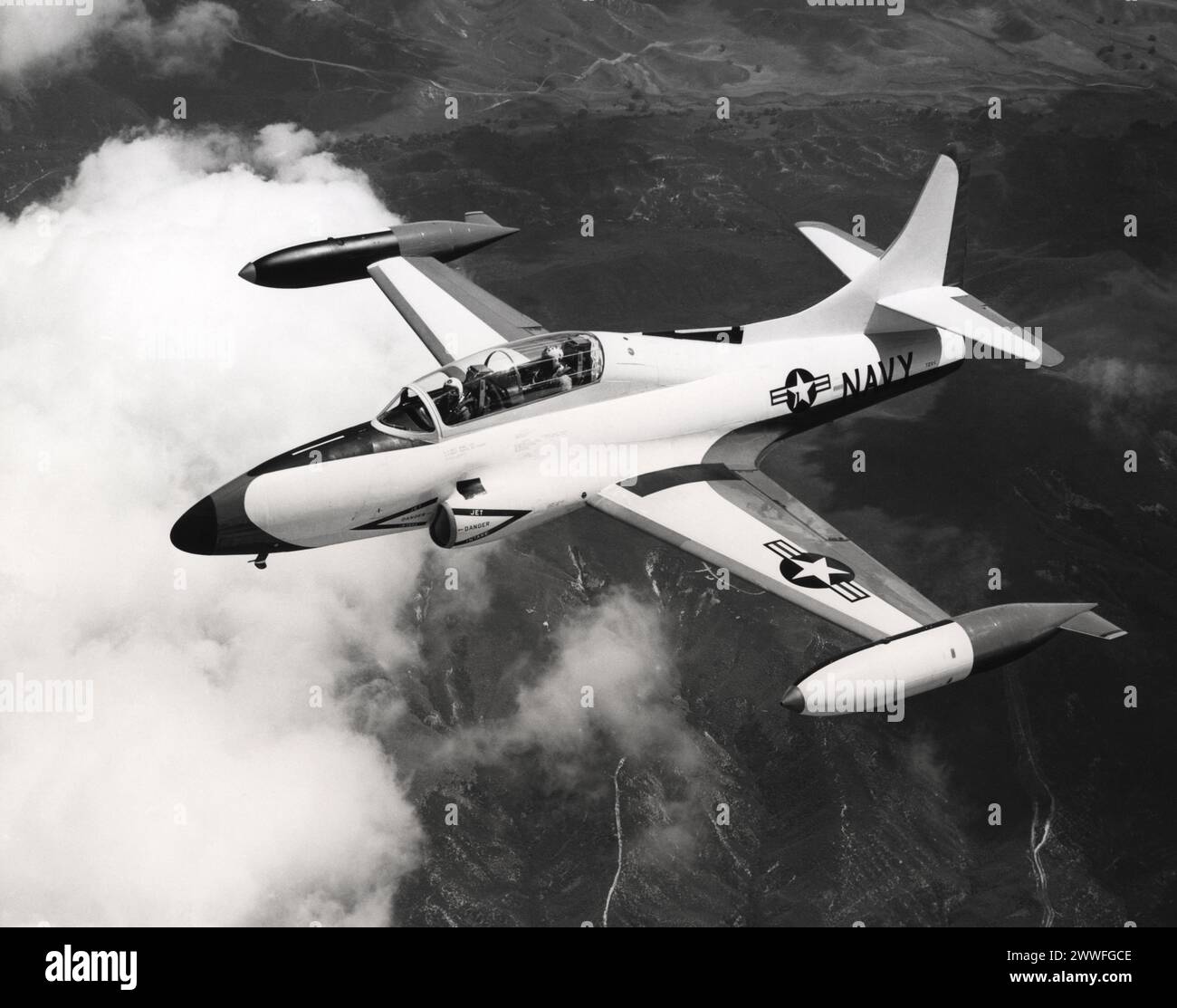California, 1957 Silhouetted against the clouds so sharply it appears hand-painted by an artist, this T2V-1 SeaStar is just that. For Lockheed paint technicians, artists in their own field, have introduced a new skin-thin paint job on the U.S. Navy's new jet trainer. During a 24-hour beautifying session in Lockheed's paint shop, the SeaStar receives a four layer "system" of paint consisting of a wash primer, regular primer and two coats of lacquer. By applying each successive coat while the previous one is still soft, all in a 24-hour period, better adhesion and durability are achieved, compan

Image details
Contributor:
Underwood Archives, Inc / Alamy Stock PhotoImage ID:
2WWFGCEFile size:
65.7 MB (1.6 MB Compressed download)Releases:
Model - no | Property - noDo I need a release?Dimensions:
5400 x 4252 px | 45.7 x 36 cm | 18 x 14.2 inches | 300dpiDate taken:
23 December 2022Photographer:
Underwood ArchivesMore information:
This image could have imperfections as it’s either historical or reportage.
California, 1957 Silhouetted against the clouds so sharply it appears hand-painted by an artist, this T2V-1 SeaStar is just that. For Lockheed paint technicians, artists in their own field, have introduced a new skin-thin paint job on the U.S. Navy's new jet trainer. During a 24-hour beautifying session in Lockheed's paint shop, the SeaStar receives a four layer "system" of paint consisting of a wash primer, regular primer and two coats of lacquer. By applying each successive coat while the previous one is still soft, all in a 24-hour period, better adhesion and durability are achieved, company officials report. Total thickness of the four coasts is only 17/000ths of an inch. Now in quantity production at Lockheed's California Division, the ship-or-shore-duty SeaStar is painted orange-and-white to facilitate easy recognition.